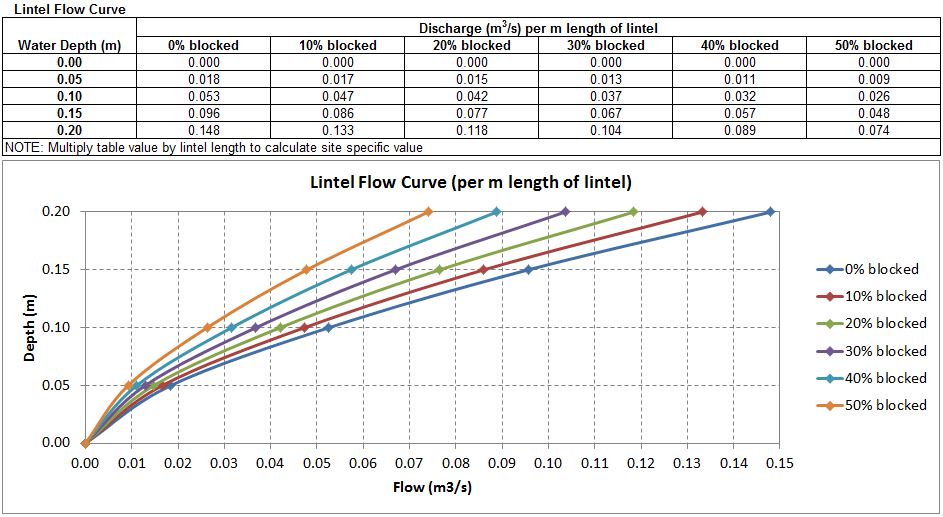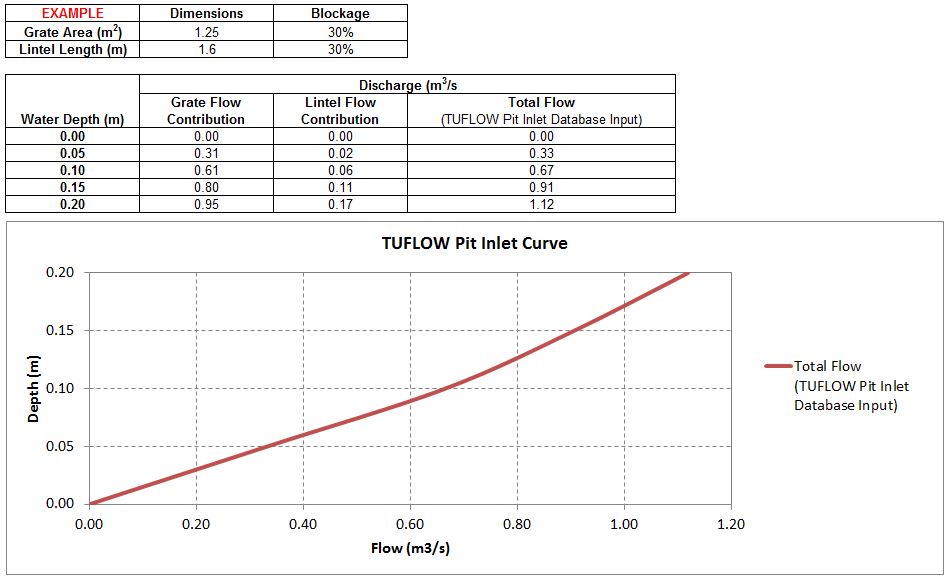1D Pits: Difference between revisions
Chris Huxley (talk | contribs) |
Chris Huxley (talk | contribs) |
||
| Line 27: | Line 27: | ||
* The length of lintel opening |
* The length of lintel opening |
||
The following graphs summarise grate and lintel flow estimates for a range of water depths and blockage factors. <br> |
The following graphs summarise grate and lintel flow estimates for a range of water depths and blockage factors. <br> |
||
[[File: Pit_Inlet_Curves_SSC001.JPG|700px]] |
[[File: Pit_Inlet_Curves_SSC001.JPG|700px]] |
||
[[File: Pit_Inlet_Curves_SSC002.JPG|700px]]<br> |
[[File: Pit_Inlet_Curves_SSC002.JPG|700px]]<br> |
||
Revision as of 15:52, 27 July 2016
Page Under Construction
Introduction
There are predominantly two types of stormwater pits (drains/gullies) used as inlets to collect overland runoff and transfer that water to the underlying drainage/culvert network;
- Grated inlets
- Lintel side inlets (side entry pits / kerb inlets).
This page of the Wiki describes how pit inlet data is incorporated into a TUFLOW model.
Pit Inlet Types
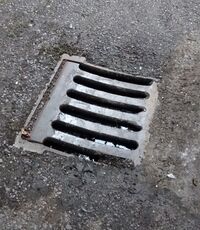 |
Grates, also known as Gully Pots, are common in the United Kingdom and are generally a square grate on top of a circular chamber and a riser outlet. The outlet will then feed into a larger culvert that forms part of the larger urban drainage network. | 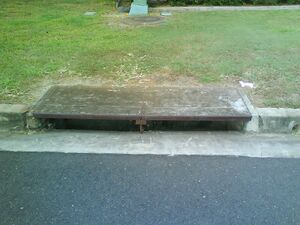 |
Lintels, also know as side entry pits are common in Australia. The pit chamber can vary depending on overall depth, length and the additional of any haunched riser units. |
Pit inflow information is defined within TUFLOW via user defined pit inlet curves. This approach allows for unlimited flexibility. Any pit design or configuration can be incorporated into a TUFLOW model if the inlet depth-discharge relationship is known. Refer to supplier specification documentation or local drainage guidance for developing depth-discharge relationships. Examples are provided in the following section.
Pit Inlet Data Sources
Pit inlet depth-discharge data can be obtained from a variety of sources. The most common typically being from suppliers or local agencies who enforce consistent design standards within their jurisdiction. Examples from Sutherland Shire Council and Brisbane City Council are provided below.
Sutherland Shire Council
The Sutherland Shire Council Urban Drainage Manual (1992) includes summary tables and graphs documenting pit grate and lintel capacity information derived from Department of Main Roads field tests. The Sutherland Shire Council pit guidelines are based on the standardised design shown below:
The capacity of a pit depends on three factors:
- The area of clear opening of the grate
- The depth of water ponding over the grate
- The length of lintel opening
The following graphs summarise grate and lintel flow estimates for a range of water depths and blockage factors.
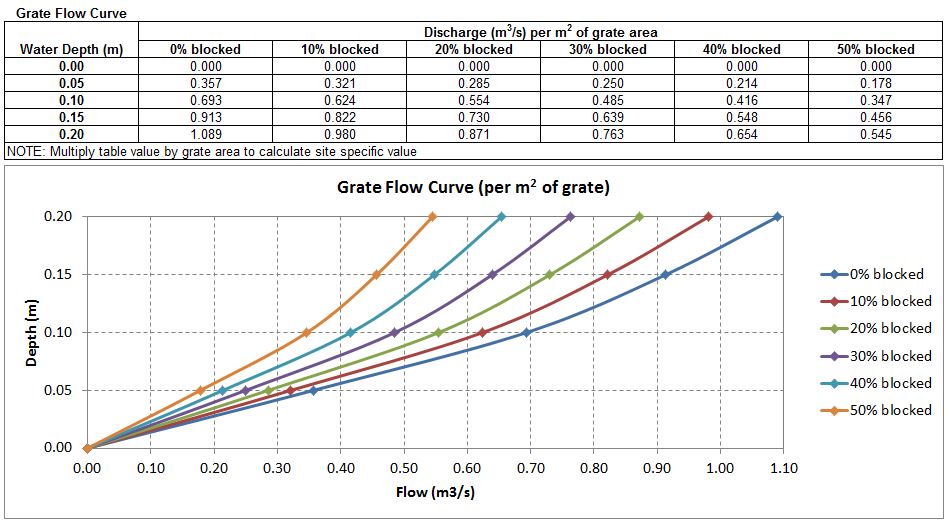
The above graphs estimate unit length and area flow estimates. These unit values are multiplied by real pit dimensions to define at site depth/flow characteristics. An example is provided below for a single pit location. TUFLOW modelling requires the derivation of a unique depth/flow curve for each pit type within the modelled area.
Brisbane City Council
The pit inlet curve examples below originate from Brisbane City Council 8000 series standard drawings: https://www.brisbane.qld.gov.au/planning-building/planning-guidelines-tools/planning-guidelines/standard-drawings
TUFLOW Modelling
Pit Search Radius
Within the *.ecf the following command is required to have TUFLOW connect floating nodes into the 1D network where connectors are not snapped to channel ends:
Pit Search Distance ==xxx
Read GIS Network ==..\model\mi\1d_nwke_*****.MIF
The order of the Pit Search Distance command is important as it can be repeated multiple times with different values that are assigned to the 1d_nwke(s) below the Pit Search Distance command. There is an example on the TUFLOW Forum here that describes the setup of the commands within the .ecf.
To check if the Pit Search Distance is working as expected, import the *_nwk_C_check file to visually see if the pits are automatically connecting to a culvert. The image below is an example of the *_nwk_C_check file and the connections TUFLOW has made to each pit.
Any further questions please email TUFLOW support: support@tuflow.com
Back to 1D Hydraulic Structures
